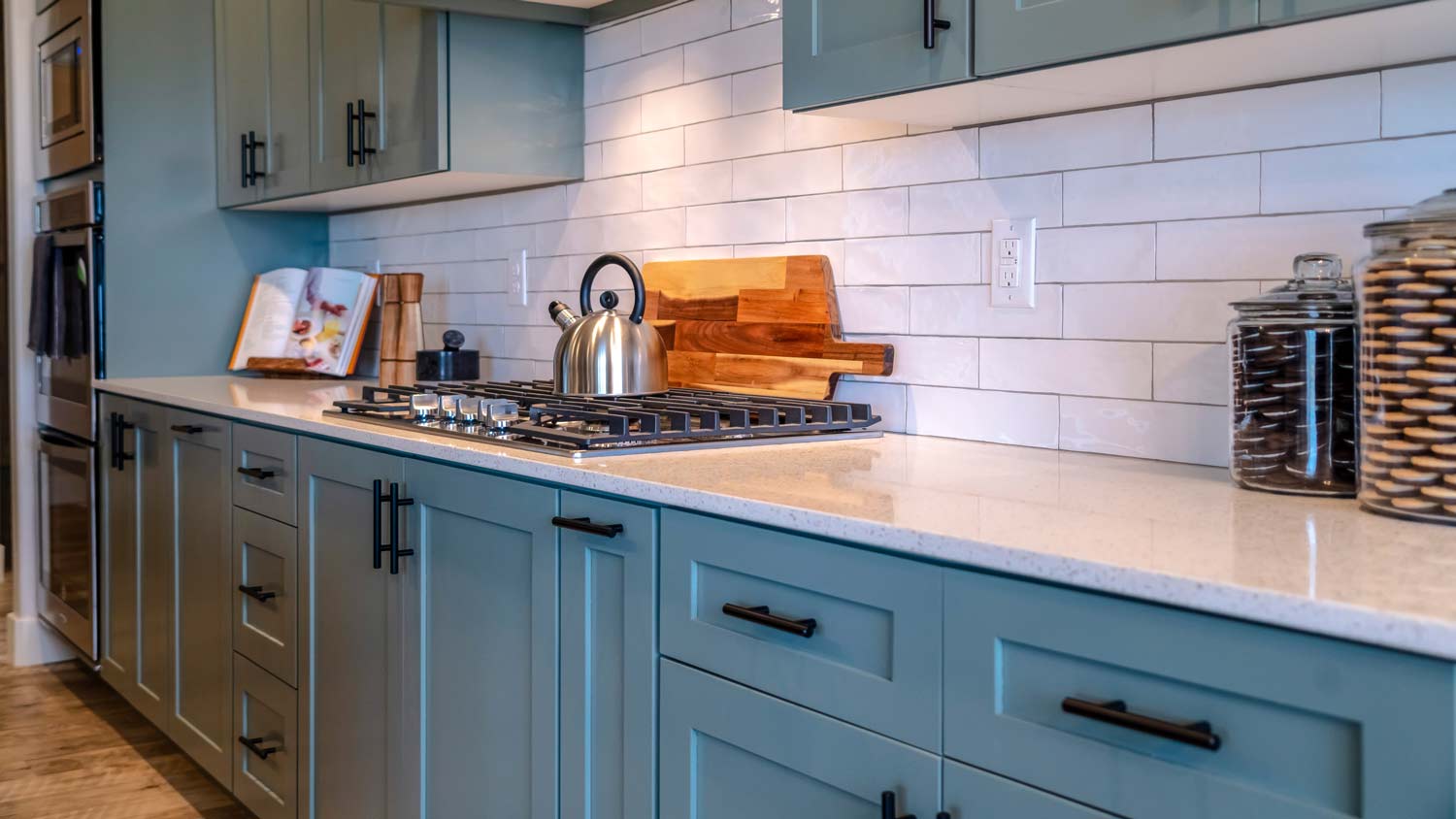
Discover the cost to stain cabinets, including average prices, key cost factors, and tips to help you budget and save on your cabinet staining project.
You can transform cabinets with a bit of sanding, a coat of primer, and a quality can of paint


Whether you’re unhappy with the color of your cabinets or they’re in dire need of a makeover, you can transform their look by learning how to paint particle board cabinets. This DIY project takes a weekend to complete (less time if you can enlist the help of a few helpers) and can make your cabinets look brand new with a few everyday tools and the right supplies. Our guide takes you step-by-step, from prepping a workstation to sanding and painting.
Painting particle board cabinets is only tricky if you don’t take the necessary steps to prep beforehand. The more measures you put in place to ensure the paint goes on smoothly in the final steps, the better the transformation will look.
To paint particle board cabinets, you’ll likely need a top-notch paint primer so you don’t have to apply multiple coats of paint to cover up the finish. Depending on the primer’s ingredients, you’ll need to paint cabinet doors in a well-ventilated area so that you and others in your household aren’t overexposed to fumes. You’ll also want to designate an area where you can put cabinet doors on a flat surface to dry.
Use plastic sheeting or drop cloths to cover the flooring and appliances near any cabinet frames or bases. This step keeps any paint splatter from getting on surfaces that can damage or stain it. It also helps to put painters tape in the areas where frames and bases meet the wall, ceiling, and backsplash to protect those areas from unwanted paint strokes.
If you’re working on kitchen cabinets, you may need to wipe them down first to remove grease or grime. You can clean cabinetry with a wet microfiber cloth and a bit of dish soap, then let them dry. Another important way to prepare for painting particle board cabinets is to number and label each cabinet door with its corresponding frame or base so that you know which cabinets belong where once the final coat of paint is dry.

Using your screwdriver, unscrew your cabinet doors from their hinges, then unscrew the hinges from the cabinet frames and doors. Lay your cabinet doors flat on a table or a separate workstation so you can sand, prime, and paint them at a smoother angle.

Take your 120-grit sandpaper and sand down the cabinet doors, bases, and frames. You’ll want to sand them down enough so that the particle board is scruffed, giving the primer something to adhere to and ensuring the cabinet has a good foundation for the final coats of paint. Just make sure you don’t sand them down so hard that you peel or chip the particle board.
Once you’ve sanded down your cabinet doors, frames, and bases, take a wet microfiber cloth and wipe each surface to remove any leftover debris. After the cabinets are dry, pour your primer into the paint tray and roll or brush it on. It’s best to use a brush for inside corners and hard to reach areas, then a roller for the frames, bases, and flat parts of cabinet doors.

Now, it’s time for the major transformation to take place. Pour your paint into a new paint tray and put on the first coat with a brush and roller. Take your time to ensure no drips are visible and that you fully coat every nook and cranny. You will need to use an oil-based paint with a semi-gloss or sheen finish since water-based paint can make the particle board swell.
In most cases, painting particle board cabinets yourself is considerably less expensive than hiring a cabinet painting company to do it for you, but it will cost you time and energy. If you don’t have the spare time to finish this project solo, you can expect to pay around $90 per hour for labor, which can add up if you have a large kitchen or older doors that need extensive sanding or multiple coats of paint or primer.
From average costs to expert advice, get all the answers you need to get your job done.

Discover the cost to stain cabinets, including average prices, key cost factors, and tips to help you budget and save on your cabinet staining project.

Discover the cost of resurfacing kitchen cabinets, including average prices, key cost factors, and tips to help you budget and save on your next kitchen update.

If you are wondering how to sand cabinets for painting, there are several ways to do it. We share the most effective sanding methods.

Discover the cost of glazing cabinets, including average prices, key cost factors, and tips to save on your cabinet glazing project.

Learning about problems with refacing kitchen cabinets can help you avoid common errors before and during your kitchen upgrading project.

You can bring your cabinets back to life without all the hassle. Here’s how to restore your kitchen cabinets without sanding or varnishing.